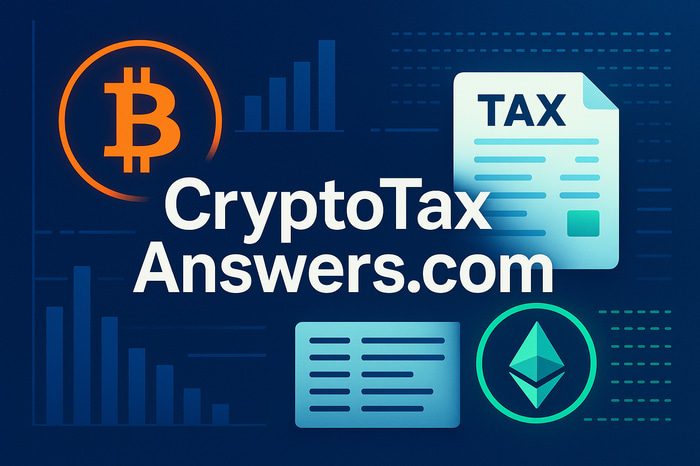Crypto recap
For the 1st week of April
CTAS
4/13/20253 min read


Crypto Market Sees Volatility and Regulatory Shifts in First Week of April 2025
April 13, 2025 – The cryptocurrency world experienced a rollercoaster week, marked by market turbulence, regulatory pivots, and innovative developments across blockchain ecosystems. From tariff-induced price swings to significant policy changes in the U.S., here’s a roundup of the key events shaping the crypto landscape over the past seven days.
Market Volatility Tied to U.S. Tariff Policies
The crypto market faced significant volatility, largely driven by U.S. President Donald Trump’s trade policies. Early in the week, Bitcoin (BTC) dipped below $80,000, hitting a 2025 low of $74,420 on April 7, as fears of a global trade war sparked a sell-off in risk assets. The total crypto market capitalization dropped 13% from $2.67 trillion to $2.31 trillion, with over 460,996 traders liquidated in a single day. Ether (ETH), XRP, and Solana (SOL) also saw sharp declines, with ETH falling to $1,400.
However, a midweek announcement on April 9 brought relief. Trump authorized a 90-day pause on tariffs for most countries (excluding China), reducing levies to 10% for the period. This triggered a swift market rebound, with Bitcoin surging 7% to $82,305 and other major tokens like XRP and Solana rallying 10%. The pause eased fears of sustained economic pressure, boosting investor confidence temporarily.
U.S. Regulatory Landscape Shifts Dramatically
Regulatory developments in the U.S. grabbed headlines, reflecting a pro-crypto stance from the Trump administration. On April 10, Trump signed a bill overturning an IRS rule that would have classified decentralized finance (DeFi) platforms as brokers, a move that had sparked concerns over stifling innovation. This decision was hailed by industry advocates as a win for DeFi’s growth.
More controversially, the U.S. Justice Department announced the immediate closure of its National Cryptocurrency Enforcement Team (NCET) on April 8. The unit, established in 2022 to combat crypto-related fraud, was disbanded to redirect resources toward investigating transnational crime and terrorism involving digital currencies. Critics warned that this could weaken efforts to curb illicit crypto activities, though the administration emphasized a focus on “crimes committed with cryptocurrency” rather than broad enforcement.
Adding to the regulatory buzz, Trump’s earlier actions continued to resonate. In March, he signed an executive order to create a federal Bitcoin stockpile, signaling strong governmental support for digital assets. These moves have fueled optimism among investors, despite concerns about inconsistent policies blending nationalism with borderless cryptocurrencies.
Global Crypto Adoption and Innovation
Beyond the U.S., global crypto adoption made strides. Pakistan emerged as a focal point, with plans to allocate surplus electricity to Bitcoin mining, aiming to bolster its digital economy. Binance founder Changpeng Zhao (CZ) was appointed as a strategic crypto advisor to Pakistan’s Crypto Council, underscoring the country’s ambition to integrate blockchain technology.
In Asia, China and Russia reportedly began using Bitcoin for some bilateral trade, according to VanEck, as a hedge against U.S. dollar dominance amid escalating tariffs. Meanwhile, Japan signaled potential regulatory clarity by exploring a dual classification system for digital assets, which could streamline adoption.
Blockchain innovation also progressed. Immutable, a Web3 gaming platform, announced plans to merge its Immutable X and zkEVM chains into a unified network by late 2025. The zkEVM chain, having processed nearly 150 million transactions, will take precedence, promising seamless asset migration for users. Elsewhere, Catizen revealed ambitions to launch 200 AI-driven games in 2025, targeting Asian markets like Japan and Southeast Asia, drawing inspiration from WeChat’s ecosystem.
Security Concerns and Market Sentiment
Despite the optimism, security remained a concern. Cybersecurity firm Kaspersky flagged a malware campaign targeting crypto users by swapping wallet addresses, urging vigilance. Meanwhile, Cardano’s ecosystem saw activity, with its foundation set to discuss AI and blockchain at Paris Blockchain Week on April 10, and a developer purchasing 686,567 ADA for a treasury move.
Market sentiment oscillated between caution and hope. Bitcoin’s “death cross” on April 7—a bearish technical signal—rattled traders, but Cardano founder Charles Hoskinson predicted BTC could hit $250,000 in 2025, driven by institutional adoption from tech giants like Apple and Microsoft. Bitcoin ETFs also showed resilience, recording net inflows of capital despite earlier price dips, with assets now exceeding $30 billion.
Looking Ahead
The past week underscored crypto’s sensitivity to macroeconomic policies and its growing integration into global finance. While the tariff pause and U.S. regulatory shifts have sparked short-term optimism, analysts warn of lingering volatility as trade negotiations unfold. Investors are advised to stay informed, with platforms like ZebPay and CoinGecko offering updates on market trends and opportunities.
As the crypto market navigates this dynamic landscape, one thing is clear: 2025 is shaping up to be a pivotal year for digital assets, blending opportunity with uncertainty.
Sources: Reuters, Fortune Crypto, CNBC, BitPinas, CoinDesk, U.Today
Track Your Crypto with Ease
Simplify your crypto journey with the ultimate tax and portfolio management tool. Whether you're trading Bitcoin, Ethereum, or altcoins, Koinly seamlessly tracks your transactions and generates accurate tax reports in minutes. Stay ahead of the game—sign up today at Koinly.io and take control of your crypto finances!
Get in touch
Crytpo Tax Answers. All right reserved. 2025
cryptotaxanswers@gmail.com
Disclaimers: I may earn commissions from affiliate links found on this website.
This is an AI co-created website. No AI were harmed in the production of this website.
CryptoTaxAnswers.com offers general cryptocurrency tax information for educational purposes only. It’s not legal, financial, or tax advice. Laws vary by country and can change quickly—consult a qualified professional for your situation. We’re not responsible for decisions based on this site.
Build your own website with Hostinger
